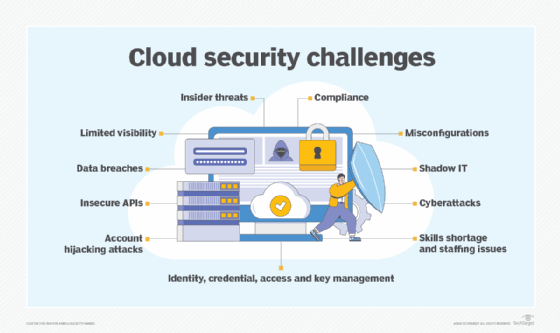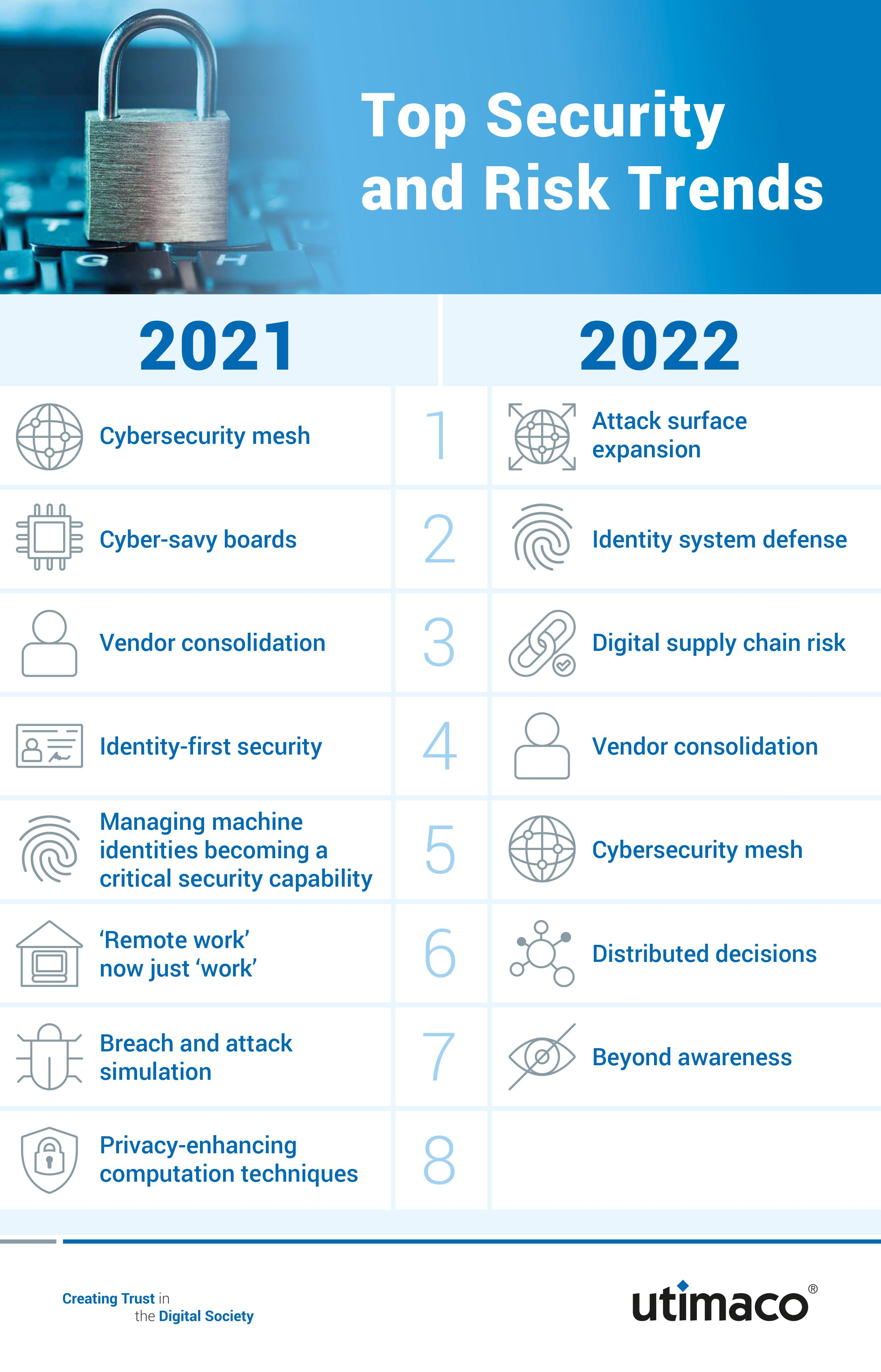Cloud security challenges are increasingly pressing as organizations migrate their operations to digital infrastructures. With the rise in cyber threats, Chief Information Security Officers (CISOs) must navigate complex issues such as data breach prevention and the misuse of cloud services. Effective cybersecurity leadership now hinges on establishing robust strategies that are aligned with overall business goals. Security awareness programs play a critical role in educating employees and stakeholders on best practices within cloud environments. Additionally, staying abreast of emerging technologies in security is essential for CISOs looking to bolster their defenses against an ever-evolving landscape of threats.
The obstacles associated with securing cloud environments present a unique set of issues for organizations today. As digital transformation accelerates, the importance of integrative strategies that focus on cybersecurity and data protection becomes paramount. The challenge lies in mitigating risks linked to cloud usage, ensuring regulatory compliance, and enhancing visibility in security posture. Cyber risk management strategies must evolve to accommodate the rapid developments in technology and the increasing sophistication of cyber attacks. Addressing these concerns requires a comprehensive approach involving the entire organization, highlighting the necessity for collective participation in safeguarding digital assets.
Understanding Cloud Security Challenges
Cloud security challenges are becoming increasingly complex as organizations migrate more of their operations to cloud environments. Critics of cloud computing often cite data breaches and misuse of cloud services as significant concerns. For CISOs, these issues necessitate advanced strategies for data protection and risk mitigation. Ensuring that cloud service providers maintain robust security practices through rigorous due diligence and verification of certifications is essential to safeguard sensitive information.
Moreover, the challenge of insufficient security practices can leave organizations vulnerable, as many businesses may not fully grasp the shared responsibility model of cloud security. Awareness programs and ongoing education within an organization are necessary to combat these challenges effectively. Building security into the cloud infrastructure from the start, along with frequent audits, can help organizations navigate these potential pitfalls.
The Role of a CISO in Managing Cybersecurity Risks
In the context of cloud security, the Chief Information Security Officer (CISO) plays a pivotal role in shaping an organization’s approach to cyber risks. The CISO’s leadership is crucial for aligning security initiatives with overall business objectives. As adversaries evolve their tactics, CISOs must prioritize not just the immediate defenses but also a long-term vision for security that incorporates emerging technologies such as machine learning and AI to bolster threat detection capabilities.
Moreover, establishing collaborative relationships with various department heads allows the CISO to integrate security into all facets of operations. This approach not only emphasizes the importance of security awareness among employees but also reinforces the notion that cybersecurity is a shared responsibility across the enterprise, transcending its traditional boundaries.
Future Cybersecurity Strategies for Digital Enterprises
As organizations delve deeper into the realm of digital operations, developing proactive cybersecurity strategies becomes paramount. This involves not only implementing robust security measures but also fostering a culture of security awareness. Programs designed to educate employees about best practices in security can significantly mitigate risks of data breaches and other cyber threats. Regular training sessions and updates will keep security at the forefront of organizational priorities.
Additionally, adopting a compliance-oriented mindset in relation to industry guidelines and standards is essential for any forward-thinking organization. Security does not only need to be confined to cloud and IT infrastructure; it must encompass application, database, and endpoint security to create a comprehensive defense framework against potential threats.
Emerging Technologies and Their Impact on Cybersecurity
Emerging technologies have the potential to greatly enhance cybersecurity measures for digital enterprises. For instance, utilizing blockchain for secure data transactions and implementing machine learning algorithms to identify anomalies in network traffic can significantly improve the overall security posture of an organization. These technologies not only automate detection but also reduce human errors, thus enhancing the security infrastructure.
As organizations begin to trust and integrate these technologies, the CISO must continually evaluate their effectiveness and adapt strategies accordingly. This ongoing review process is critical in an ever-evolving landscape filled with new threats and vulnerabilities, ensuring the organization remains one step ahead in the cybersecurity realm.
The Importance of Security Awareness Programs
Security awareness programs are fundamental to building a resilient cybersecurity culture within any organization. By equipping employees with knowledge about potential threats and preventative measures, CISOs can foster a proactive approach among staff. This not only deters potential insider threats but also ensures that all employees are vigilant and responsive in the face of a cyber incident.
Regular training and updates regarding emerging threats, compliance needs, and best practices are crucial. By integrating these programs into the organization’s routine operations and making them a priority, the importance of security becomes embedded in the workplace culture, empowering everyone to contribute to the organization’s overall security strategy.
Prioritizing Cybersecurity in Business Strategy
Organizations are increasingly recognizing that cybersecurity isn’t just an IT issue—it is a crucial component of overall business strategy. The role of the CISO is evolving to incorporate a broader understanding of business operations and risk management. This alignment ensures that security measures are relevant and effective, addressing not only technological risks but also organizational vulnerabilities.
With the growing influence of digital transformation, it becomes imperative for businesses to integrate cybersecurity priorities into their strategic plans. This shift requires CISOs to communicate risks effectively to the management, ensuring that security initiatives receive the necessary resources and support from top leadership.
The Evolution of the CISO Role
The role of the CISO has transformed dramatically over the years, evolving from a technical-focused position to one that is integral to business strategy. As organizations face mounting cyber threats, securing a seat at the executive table has become indispensable for CISOs. They are increasingly tasked with bridging the gap between IT security and broader business objectives, ensuring that security considerations are woven into every operational decision.
This evolution necessitates that CISOs become adept communicators, capable of articulating technical risks in terms that business leaders understand. The ability to influence top management to prioritize cybersecurity not only protects organizational assets but also helps in driving a cohesive approach to risk management throughout the organization.
Lessons Learned: Improving Security Strategies
Reflecting on past incidents can provide valuable insights into refining an organization’s security strategy. The rise in zero-day attacks and fileless techniques highlights the necessity for CISOs to enhance detection mechanisms and response strategies. Traditional defenses are proving insufficient, leading to an urgent demand for innovative solutions that leverage advanced technologies to protect sensitive data.
Regularly reevaluating and updating security protocols is crucial in light of evolving cyber threats. By learning from previous experiences, CISOs can implement comprehensive strategies that not only protect against current vulnerabilities but also prepare the organization for future challenges in the cybersecurity landscape.
Addressing Compliance in Cybersecurity Strategies
Staying compliant with industry regulations and standards is a critical aspect of developing a robust cybersecurity strategy. For CISOs, ensuring that all processes and technologies meet these requirements is essential in mitigating risks of penalties and reputational damage. This involves a continuous assessment of the organization’s practices against the latest compliance standards.
Incorporating compliance measures into the security framework enables organizations to not only enhance their security posture but also instills trust among customers and partners. As regulatory landscapes evolve, organizations must remain agile, adapting their security strategies to uphold compliance while navigating the complexities of the digital environment.
Frequently Asked Questions
What are the cloud security challenges that CISOs need to address today?
CISOs face several cloud security challenges including data breaches, misuse of cloud services, lack of comprehensive security practices, and difficulties in auditability. Addressing these challenges requires a proactive approach to risk management and regular assessments of service providers’ security policies.
How does the role of a CISO in cloud security impact data breach prevention?
The CISO plays a critical role in data breach prevention by establishing robust security frameworks and continuous monitoring protocols to protect cloud environments. This includes ensuring that cloud service providers comply with industry security standards and conducting regular security awareness programs for employees.
What security awareness programs can help combat cloud security challenges?
Implementing comprehensive security awareness programs is essential to combat cloud security challenges. These programs should educate employees about the risks of cloud usage, phishing attacks, and secure data handling practices to foster a culture of security throughout the organization.
How can emerging technologies help CISOs tackle cloud security challenges?
Emerging technologies such as machine learning and AI provide enhanced capabilities for detecting anomalies within cloud environments, thus enabling CISOs to respond quickly to potential threats. These technologies improve threat detection accuracy, minimizing false positives and reinforcing overall cloud security.
What steps should CISOs take to manage cloud security effectively?
To manage cloud security effectively, CISOs should conduct thorough due diligence on cloud service providers, ensure alignment between security strategies and business objectives, and maintain ongoing communication about security risks with leadership. Regularly reviewing cloud security practices is also critical to adapt to evolving threats.
What role do cybersecurity leadership practices play in overcoming cloud security challenges?
Effective cybersecurity leadership practices are vital for overcoming cloud security challenges. CISOs must demonstrate commitment to security at all levels of the organization, promoting collaboration, investing in new technologies, and fostering a culture where security is prioritized by everyone.
How important are security certifications in addressing cloud security challenges?
Security certifications are crucial in ensuring that cloud service providers adhere to established best practices and security standards. CISOs should verify these certifications as part of their risk assessment process to mitigate potential cloud security challenges.
In what ways can organizations enhance application-level security in the cloud?
To enhance application-level security in the cloud, organizations should implement strong authentication protocols, regular software updates, encryption of data at rest and in transit, and robust access controls. These measures collectively address numerous cloud security challenges.
How can failures in cloud security impact the CISO’s role?
Failures in cloud security can heighten the stakes for CISOs, leading to increased accountability and responsibility. Such incidents may also prompt a reevaluation of security strategies, necessitating improved collaboration with other business units to bolster cloud security measures.
What are the anticipated future challenges for CISOs in cloud security?
Future challenges for CISOs in cloud security may include the rise of sophisticated cyber threats, increasing regulatory compliance requirements, and the integration of new technologies. Staying ahead will require continuous education, adapting to technology advancements, and fostering a culture of security awareness.
| Key Point/Question | Insights from Biju K, Chief Information Security Officer |
|---|---|
| Role as a cybersecurity leader | Focus on security hygiene and cost-effective risk mitigation strategies. |
| Unique security challenges for CISOs in cloud security | Data breaches, misuse of cloud services, insufficient security practices, and auditability are critical challenges. |
| Strategy for managing security with emerging technologies | Ongoing due diligence on service providers and stringent verification of their security certifications are essential. |
| Key security initiatives undertaken | Aligning security strategy with business, maintaining collaboration, conducting awareness programs, and regular communication of risks. |
| Emerging technologies for enhancing security | Technologies like blockchain, AI, and ML strengthen security infrastructure and enhance detection capabilities. |
| Lessons learned from 2017 | Increased focus on endpoint security and adapting to evolving attack methods including fileless techniques. |
| Cybersecurity priorities for 2018 | Enhancing security awareness, reviewing practices, ensuring compliance, and emphasizing security across all levels. |
| Future evolution of the CISO role | Greater recognition of security as a business priority and improved alignment with IT operations. |
Summary
Cloud security challenges remain a crucial issue as organizations navigate the complexities of protecting critical data in an increasingly digital world. Biju K, the Chief Information Security Officer at Federal Bank, sheds light on these challenges, emphasizing the importance of addressing data breaches, misuse of cloud services, and insufficient security practices. To combat these risks, CISOs must adopt robust strategies that involve regular audits of service providers, enhanced endpoint security, and a culture of continuous security awareness across the organization. The evolving landscape of technology presents new opportunities and threats, and a collaborative approach to cybersecurity, aligning security initiatives with business goals, will be essential for success.



